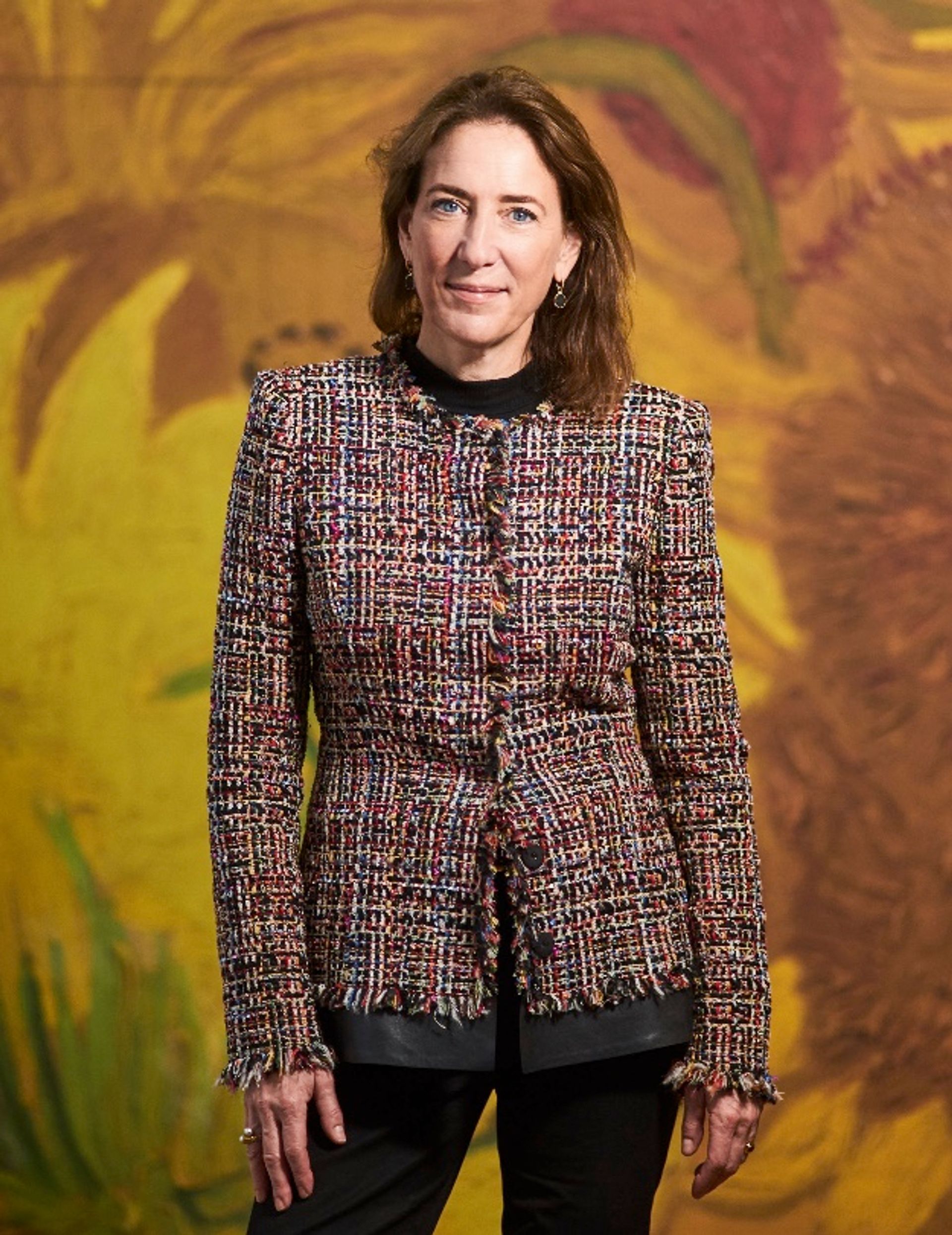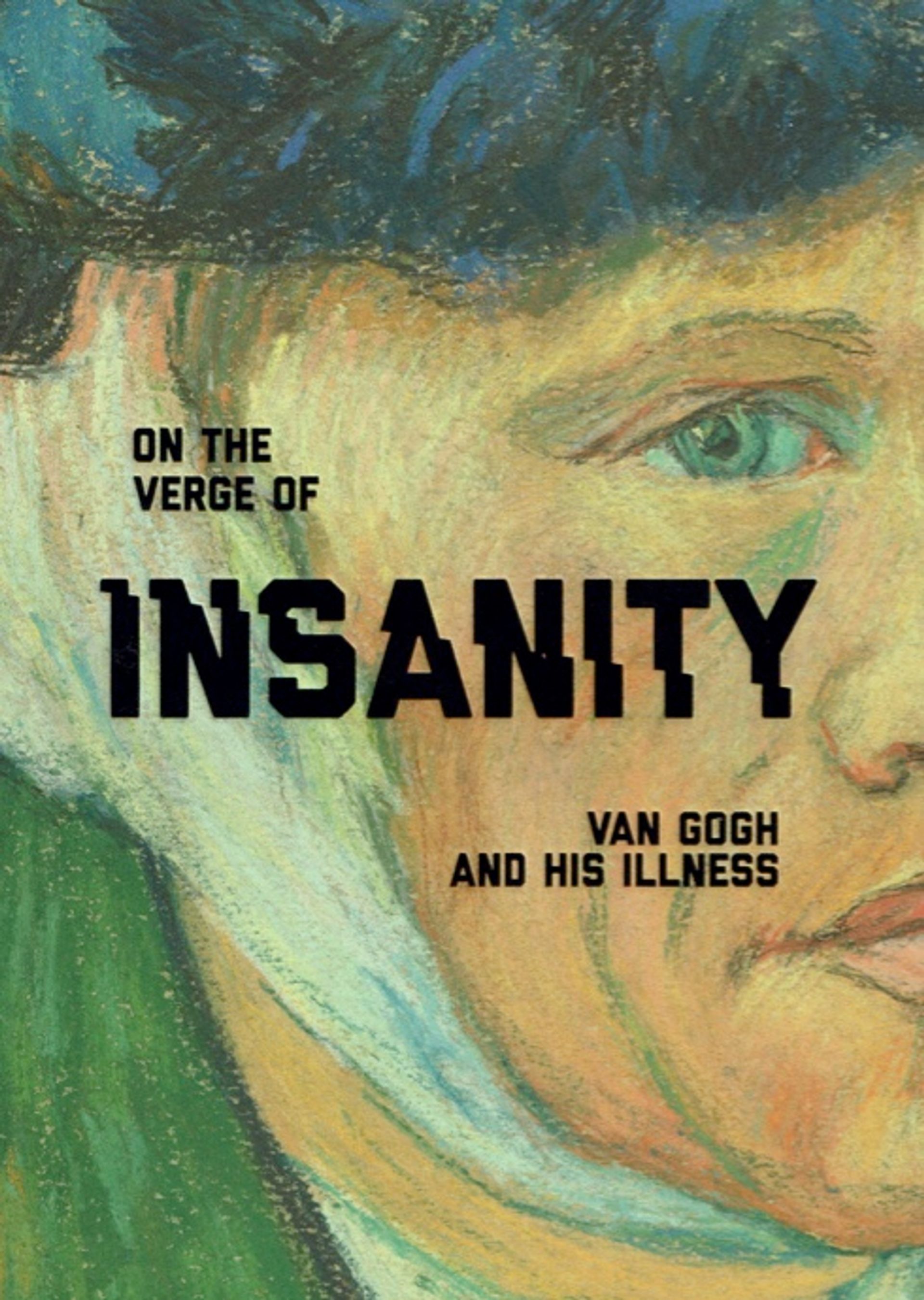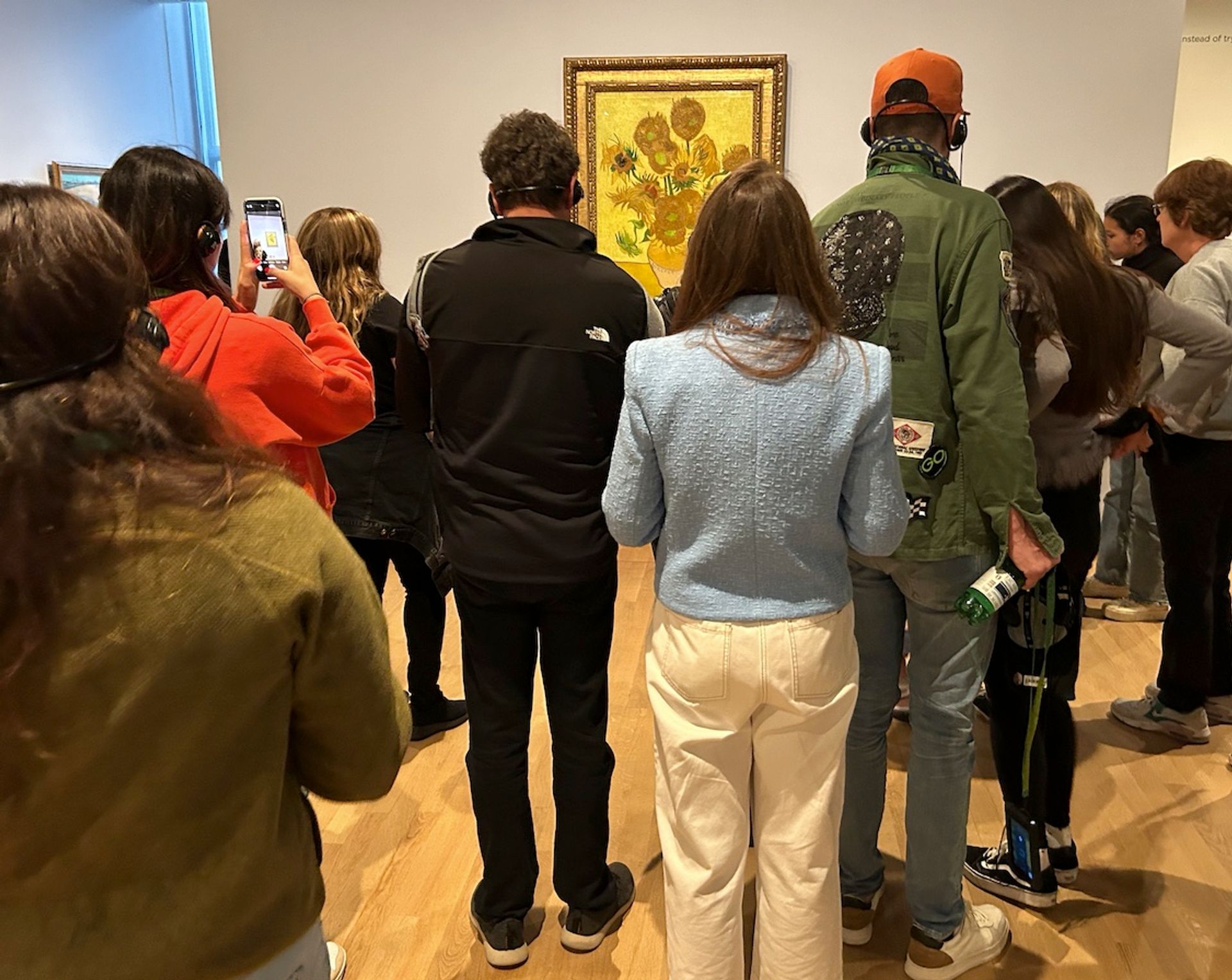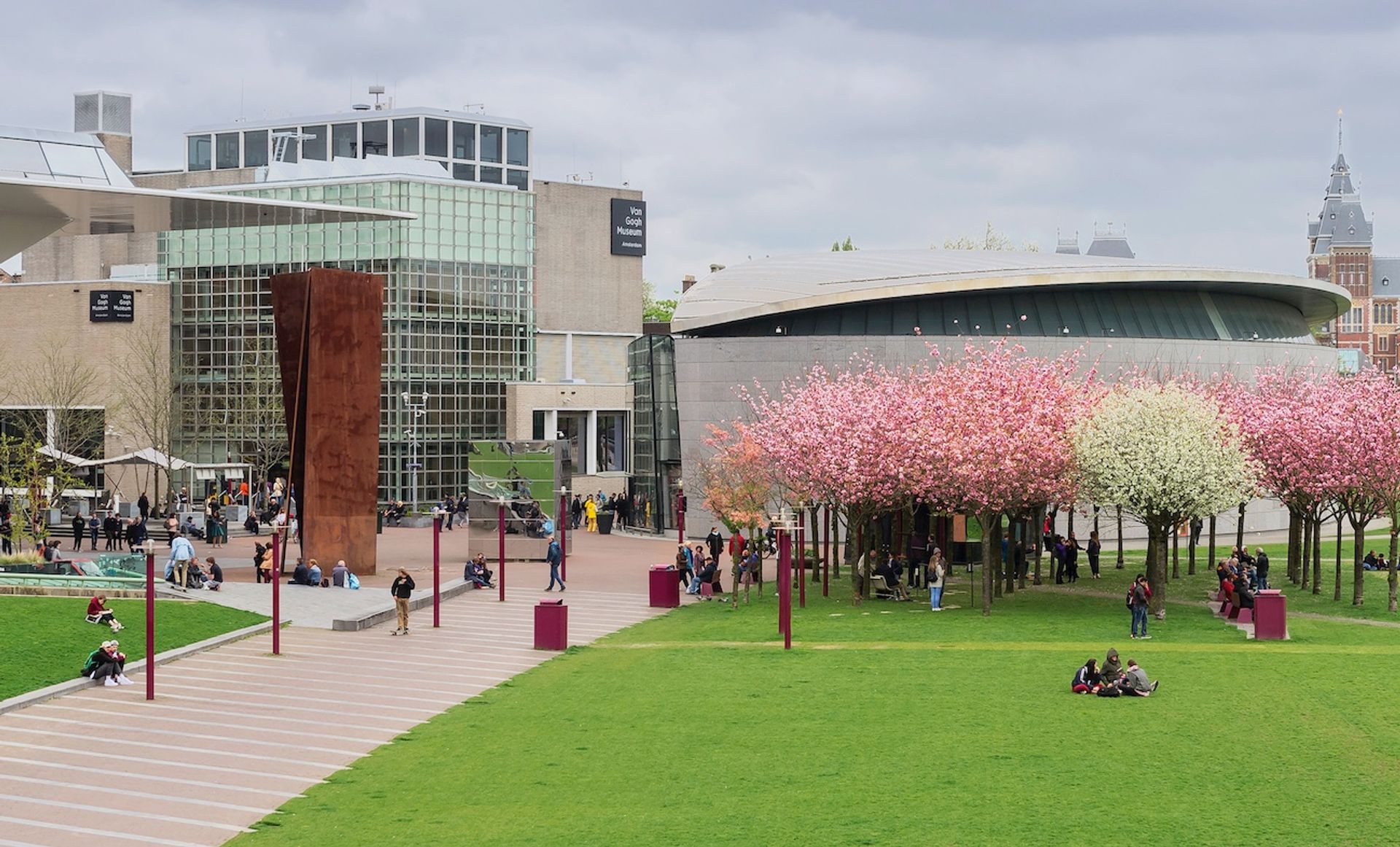On June 2, the Van Gogh Museum in Amsterdam celebrates its 50th anniversary, marking its opening in 1973. With a magnificent collection donated by the grandson of Vincent’s brother, Theo, it is the largest museum in the world dedicated to a single artist.

Emilie Gordenker, director of the Van Gogh Museum, Amsterdam Credit: Van Gogh Museum, Amsterdam
For this week’s post, I interviewed Emilie Gordenker, who took over as director in February 2020. A specialist in 17th-century Dutch art, she came from the Mauritshuis in The Hague, where she had been director since 2008.
The month after Gordenker arrived, the museum had to suddenly close due to Covid-19, plunging the museum into what she describes as “the biggest crisis” in its 50 years. On the eve of the anniversary celebrations, she speaks candidly about accomplishments and challenges.
Martin Bailey: Coming to the museum, you must have thought a lot about why Van Gogh is so popular with visitors from all over the world. What makes it so special?
Emilie Gordenker: We know so much about Van Gogh’s personal history, through his letters. Most visual artists are not “bilingual”: their main language is visual and you’re lucky if they can also express themselves in words, let alone write like him. Van Gogh’s paintings are colorful, his subject matter is attractive, he is varied, he is very direct. His life has been one of hard work against all odds: the difficulties he overcame represent a fascinating story, bringing comfort and hope. There is a freshness and an immediacy in his work. Each generation seems to rediscover it.
People are as interested in Van Gogh’s story as they are in his art. How, as a museum, do you deal with history, and in particular its problems?
Until a few years ago, we at the museum didn’t talk much about Van Gogh’s mental state. There was then a very good research project which resulted in an exhibition in 2016, On the edge of madness. Now, at this time, a lot of young people are struggling with mental health issues and are more open to talking about it. Van Gogh offers us, through his writings, his work, the story of his life, a way of talking about our own situations.

Catalog of On the Verge of Madness: Van Gogh and His IllnessVan Gogh Museum, 2016
We are at an extraordinarily polarized time, whether in politics or in our society. Museums are places where people generally trust us. We are a place where we can discuss, following the example of Van Gogh. It’s a way to connect with people.
What do visitors like and dislike about your museum?
We regularly monitor visitor reactions and always achieve very good results. But if there is a critical note, it is that of the crowd. People are much more easily disturbed by crowds, post-Covid.

Visitors to the Van Gogh Museum Credit: The Art Journal
How do you deal with clutter?
Popularity is a nice problem to have, but a tricky one. When I arrived, we sat down with staff and the board to draft a new strategy. Covid has made us think very seriously about these issues. My predecessors did a tremendous job in a period of growth: at the time, it was about more. But it couldn’t last forever.
We have more visitors per square meter than any other major museum in the world. We have a great location, a big name and a big collection, but a relatively small building.
When you put all of these things together, there is more demand than we can meet. There are very few silver linings in Covid, but timed ticketing is one of them. Visitors have become accustomed to this idea – and we will keep it.
The message is not that we want to keep people out. On the contrary, we want people to come, but we want them to have a pleasant visit.
What does this mean in terms of numbers?
During Covid I faced the biggest museum crisis in our nearly 50 year history. We receive relatively little government funding and a large part of our income comes from ticket sales. When half of your income disappears, you think very seriously about your financial model. This was an opportunity to rethink that.
We started from scratch. We started by thinking about a cost basis: to carry out our program, how much do we need for it? Then the next question is what is the minimum number of visitors we need to reach our goal?
It’s a different way of thinking. In the past, “more was better”: the more money you made, the more you made. Instead, we said, what is really important to do? Which visitors are we not reaching and why? And then, how much money do we need to do it?
We have calculated that we will be financially viable with a quarter fewer visitors than before Covid. In 2019 we had over 2.1 million visitors, but have now opted for 1.6 million. Last year with Covid we had 1.3 million, but this year it will be 1.6 million or maybe more, but we don’t have to increase excessively.

The original Van Gogh Museum building from 1973 (left) and the exhibition wing from 1999 and visitor entrance from 2015 (right) at Museumplein Credit: Van Gogh Museum, Amsterdam (photo Jan Kees Steenman)
Could you extend your building to accommodate more visitors?
It’s possible, but it would probably be underground. This is something we want to start exploring later this year, but it would take a long time.
How do you organize your exhibition program?
It was one of the things that I had to decide on very quickly, because the planned program had to be thrown overboard because of the Covid. It was an opportunity to reflect on what we want to do in the future. At what time of the year do you want what type of exhibition?
We decided that autumn, when we have fewer tourists, should be the time to focus on our Dutch visitors. The perception of our museum had become a problem in the Netherlands, where we were perceived as tourists. It was time to rethink messaging, so that our Dutch visitors can rediscover us. I want them to fall in love with us again. This informed my thinking about exhibitions. In the fall, we will plan solid and well-researched shows with loans.
Spring will be more of an exhibition playground. It will be a time to think more broadly – maybe a project with artists of our time, maybe a thematic exhibition, maybe something outside his usual comfort zone or even a very scholarly exhibition with less visitors.
In the summer we will bring back the exhibit we had earlier this year on the Van Gogh family, Choose Vincent. It’s a great story for first-time visitors. We will perform the same show next year, with some modifications, and in the next few summers.

The entrance to this year’s presentation of Choose Vincent Credit: The Art Journal
There will therefore be fewer loan issues. Is it to save money?
It was a consideration, but not the only one. It was all about establishing a rhythm. But when you see the rising costs of major loan shows, especially for transport and insurance, you really have to think about how much you want to spend. Of course, we will continue with loan issues, because that’s what we do well.
How are you going to celebrate the 50th anniversary of the museum?
With a very big party at the Museumplein (the big square next to the museum). It will be open to everyone on the afternoon of June 2.
In the Netherlands we have a custom that on your birthday you give something to your friends, it’s called a Traktatie (to treat). What it is, will be a surprise.
Now for the tougher question: what will the museum look like in 50 years?
Nobody has a crystal ball. But Van Gogh had a resonance for every generation. I expect this to continue, but I can’t tell you exactly how.
Will people still go to museums?
I am absolutely certain of it. We moved very quickly from a verbal culture to a visual culture. It really helped us as a museum: people are more comfortable looking at things. Thus, the proliferation of images has helped us to make clearer what we have.
Digital is here to stay, it offers us a lot, but it does not replace the actual experience of seeing a work of art. People really want to see an object. It’s always different to see a work of art in a physical way, a painting on a wall.
